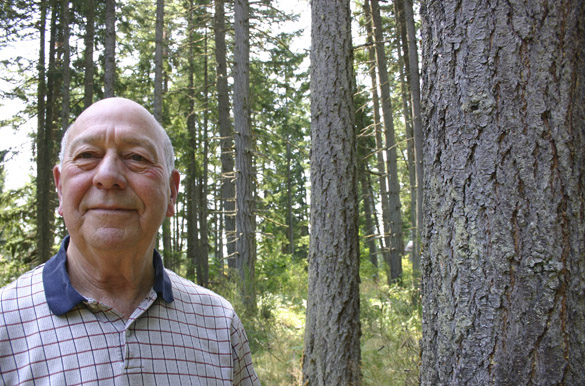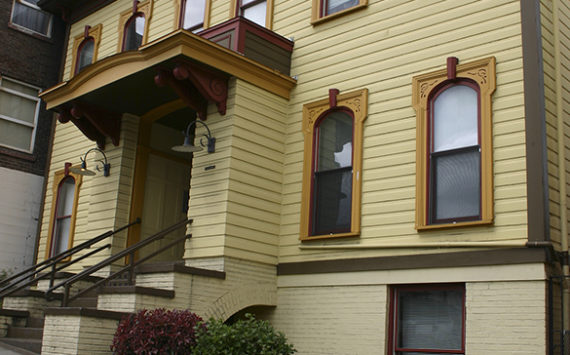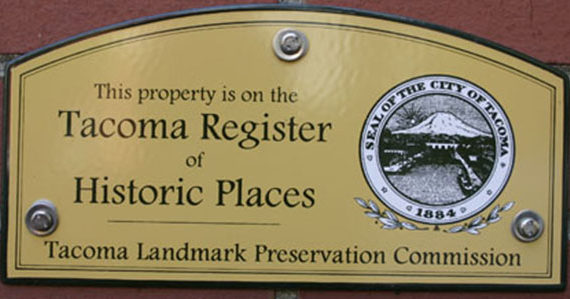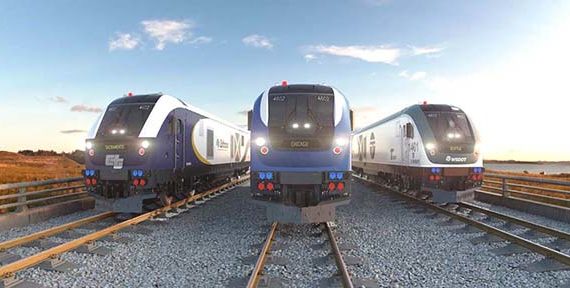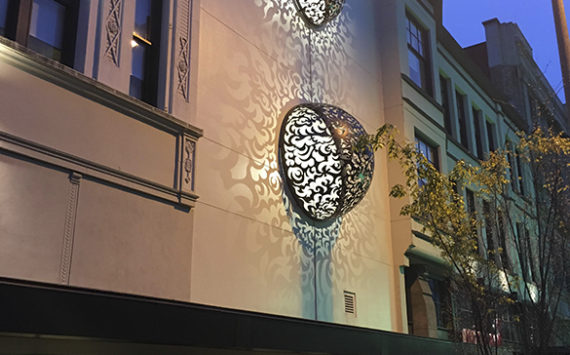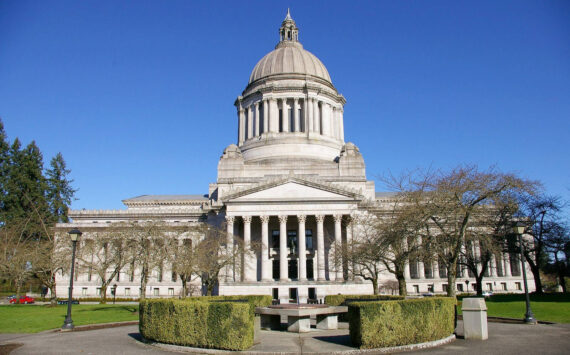The Washington State Department of Transportation (WSDOT) announced this week it has backed off on a plan to demolish the historic McMillin Bridge in Pierce County as part of a larger plan to build a new bridge nearby.
The concrete bridge, which was listed on the National Register of Historic Places in 1982 and is owned by WSDOT, was built in 1934 and is part of State Route 162 that connects Orting to Sumner. WSDOT officials have said the bridge is functionally obsolete and a new bridge needs to be built. WSDOT planned to build a new bridge just east of the McMillin Bridge then tear down the historic bridge.
The McMillin Bridge’s inclusion on the National Register of Historic Places is only an honorary designation with little regulatory bearing other than what is known as “Section 106” of the National Historic Preservation Act of 1966. In the case of the McMillin Bridge, Section 106 requires that a federal agency consult with a range of stakeholders to determine if demolishing the bridge will have any adverse effects. Because the McMillin Bridge crosses a body of water, the Puyallup River, the lead federal agency in this case is the United States Army Corps of Engineers (ACOE). In the end, it’s the Corps that was to decide whether to issue the permit allowing the new bridge to be built and the old bridge to come down. The ACOE was expected to make a decision later this year.
“We request the Corps place this application on hold,” wrote WSDOT Environmental and Hydraulic Manager Jeff Sawyer in a July 17, 2013 letter to the ACOE. “WSDOT intends to revise the project to eliminate demolition of the McMillin Bridge from the proposal. The McMillin Bridge will remain in place after traffic is relocated to the new structure. We will be working to prepare and resubmit a new application package as soon as possible.”
NOTE: The Index has contacted WSDOT asking for more information regarding this decision, such as: What factors contributed to WSDOT’s decision to change course and keep the McMillin Bridge? What are the future plans for the McMillin Bridge? Will WSDOT preserve it in place and continue to own it? Will it be converted for pedestrian and bicycle use only? Or will motor vehicle traffic continue to travel over it? This story/post will be updated as more information is available.
UPDATE — Sat., July 20 @ 9:30 a.m. | WSDOT Environmental and Hydraulic Manager Jeff Sawyer responds via e-mail:
“Due to the time expended to date in complying with the National Historic Preservation Act being administered by the Corps of Engineers and timeframe the Corps has advised WSDOT to expect in moving forward, WSDOT is exploring changing the project to leave the McMillin Bridge in place. WSDOT has a need to move forward in a more timely fashion with replacement of this obsolete highway bridge. In exploring moving forward with a proposal to build a new bridge, reroute the state highway to it and leave the obsolete McMillin Bridge in place we will be reaching out to county, state, federal and tribal natural resource interests to consider if there is a reasonable path forward to leaving the McMillin Bridge in place.
“At this point in time the concept for the McMillin Bridge would be to reroute State Route 162 vehicle traffic to a new crossing downstream, once completed. We do not envision the bridge being used for pedestrian or bicycle use as Pierce County has indicated little interest to date in routing the Foothills Trail over it. Once taken out of service vehicle access would be discontinued.”
Historic preservationists throughout Washington State and beyond argued the bridge is historically significant because it was designed by Homer M. Hadley, whose work contributed to bridges spanning rivers, lakes and creeks throughout Washington State. Hadley pushed for the state to build a floating concrete bridge across Lake Washington. Today, the westbound span of the Interstate 90 floating bridge is officially named the Homer M. Hadley Memorial Bridge.
Last month, Pierce County Council voted to the add the bridge to its historic landmarks register.
UPDATE — Weds., July 24 @ 2:25 p.m. | Chris Moore, Field Director for the Washington Trust for Historic Preservation (the organization that nominated the McMillin Bridge to Pierce County’s historic register), adds the following via e-mail:
“The Washington Trust applauds WSDOT’s decision to leave the McMillin Bridge in place while a new bridge crossing over the Puyallup River along SR162 is constructed. Our position has always been that demolition of the McMillin Bridge was unnecessarily connected to construction of the new bridge. With WSDOT’s recent decision, we are hopeful construction of the new bridge can move forward providing Pierce County residents with a needed transit solution for the river crossing.
“In the short-term, the bridge will be saved. But per WSDOT’s statement, there will be no vehicular or pedestrian access. If the bridge is simply fenced off and left unmaintained, it will be a loss for everyone.
“What the decision does do is affirm the historic significance of the bridge and its value to the community. It also allows more time to work with all stakeholders, including Pierce County, to develop a long-term stewardship plan for the bridge. There is now the opportunity to have broader civic engagement about the future of the bridge without the specter of immediate demolition. Given the existing support for the bridge, the Washington Trust is optimistic a long-term plan will be found.”
UPDATE — Fri., July 26 @ 7:30 a.m. | Retired WSDOT engineer Robert Krier, who nominated the McMillin Bridge to the Washington Trust for Historic Preservation’s most endangered properties list two years ago, responds via e-mail:


TACOMA DAILY INDEX: What do you think of WSDOT’s recent decision?
ROBERT KRIER: Until I receive more details and a description of WSDOT’s plans I do not feel I can provide an appropriate response. Five years ago WSDOT executives, for unknown reasons, decided to include demolition, rather than preservation, of the McMillin Bridge with construction of the new bridge (Sawyer 06-17-08). Two years later when WSDOT applied for a construction permit from the Corps of Engineers (COE) they were required to comply with the Section 106 Process because the construction included adverse affects on historic properties (demolition of the McMillin Bridge). During these past three years of being engaged with the consulting parties, WSDOT continued to stand firm that the Bridge was going to be demolished. Now, the consulting parties have been furnished statements from WSDOT (Sawyer 07-17-2013) saying the bridge will be left in place contingent upon conjecture, conditional impacts, a reasonable path and who knows what else may be included in the plan. Note: no mention is made of historic preservation and a time for the bridge to be left in place, such as one year or perpetuity. If WSDOT has decided to preserve the McMillin Bridge in place why are they separating it from the current permit application? It would seem the COE would issue a permit for construction immediately if there is not going to be an adverse affect on historic properties. The Section 106 Process would be completed and the construction could commence. In other words, if WSDOT had made this decision three years ago the new bridge would likely be nearly finished by now.
One must question whether WSDOT is really sincere in revising their original mandate of 06-17-08 from demolition of the McMillin Bridge to preserving the Bridge in place. Is it really necessary to submit a new application for a permit and expend the time and resources when there is a shortage of funds and cause another extended delay in construction of the new parallel bridge to eliminate a safety hazard?
INDEX: Do you think it means the bridge will be saved?
KRIER: In the July 17, 2013, letter from WSDOT and the UPDATE in your article, WSDOT indicates they are identifying other issues. They will be reaching out to other agencies to determine if there is a reasonable path forward. Something appears dysfunctional with these activities. Five years ago WSDOT began reaching out to the agencies for input to the project. How long does it take to collect the necessary responses and move on to construction? They continue to imply that leaving the bridge in place is contingent upon involvement with the Foothills Trail. Additional information and clarification is necessary to understand what WSDOT is implying with those statements. What kind of impacts are they referring to and what are the potential consequences? What is a “reasonable path forward?” After five years and they are still searching for a path?
As indicated above, the Consulting Parties, other agencies and the tribe have been involved in the Section 106 Process for the past three years. The issues now being introduced by WSDOT have already been explored and there has not been any documentation from those agencies stating they want the bridge demolished. At the very beginning of the Section 106 Process it was proposed to WSDOT to preserve the McMillin Bridge as a historic roadside attraction similar to the Indian Timothy Memorial Bridge that WSDOT graciously preserved in place as a tribute to Chief Timothy, a Nez Perce Indian. It was proposed that the same consideration for preservation would be applicable for leaving the McMillin Bridge in place as a tribute to Homer Hadley and the innovative efforts of the engineers and craftsmen of the past, as well as for the unique historic features of the bridge. WSDOT has never acknowledged that proposal. I brought this to the attention of Mr. John Wynands (WSDOT Assistant Region Administrator) on June 05, 2013, and am still waiting for a response.
When the McMillin Bridge is left in place it must have pedestrian access the same as the Indian Timothy Memorial Bridge so the public can access the bridge and marvel at its structural and architectural features. However, there is no reason why the preservation of the McMillin Bridge should be contingent on carrying the Foothills Trail traffic. The Trail itself does not contribute any historic significance to the McMillin Bridge, and it is not necessary for the Trail to play a role in preserving the McMillin Bridge. Those are separate entities and should be treated as such. The McMillin Bridge has its own historic significance without the existence of the Foothills Trail.
INDEX: Do you think the bridge could still be in jeopardy down the road?
KRIER: Without having more details and information about WSDOT’s project revisions, I cannot anticipate what lies ahead, but I am extremely concerned. I would feel more comfortable if WSDOT would issue a direct statement that the McMillin Bridge shall be preserved with the same respect as the Indian Timothy Memorial Bridge.
An encouraging note: the Pierce County Council recently recognized the historic significance of this rare and unusual structure, its importance to the local residents and placed it on the County Historic Landmarks Register. I do believe if the various agencies are sincere in working together with the public to arrive at a mutual appreciation and approval for preservation of the McMillin Bridge, our goal can be achieved.


To read the Tacoma Daily Index‘s complete and comprehensive coverage of historic McMillin Bridge, click on the following links:
- McMillin Bridge added to Pierce County historic register (Tacoma Daily Index, June 19, 2013)
- McMillin Bridge historic nomination reaches Pierce County Council (Tacoma Daily Index, May 20, 2013);
- Pierce County Council committee OKs historic McMillin Bridge nomination (Tacoma Daily Index, May 7, 2013);
- Pierce County Council committee to consider historic McMillin Bridge nomination (Tacoma Daily Index, May 2, 2013);
- Pierce County Commission OKs landmark nomination for historic McMillin Bridge (Tacoma Daily Index, Feb. 21, 2013);
- Public hearing scheduled for McMillin Bridge historic landmark nomination (Tacoma Daily Index, Jan. 15, 2013);
- Tacoma Daily Index Top Stories — 2012 (Tacoma Daily Index, Jan. 2, 2013);
- Year In Review: Saving McMillin Bridge (Tacoma Daily Index, Dec. 17, 2012);
- Fearing its demolition, preservationists nominate McMillin Bridge to Pierce County’s historic register(Tacoma Daily Index, Nov. 16, 2012);
- Pierce County’s historic McMillin Bridge has lasted almost 80 years. Can it survive WSDOT? (Tacoma Daily Index, Sept. 7, 2012);
- Future uncertain for historic McMillin Bridge (Tacoma Daily Index, May 9, 2011).
For more information about Homer M. Hadley, the McMillin Bridge, and WSDOT’s project, click on the following links:
- WSDOT’S McMillin Bridge project website
- WSDOT’s McMillin Bridge public documents website
- Historic American Engineering Record’s McMillin Bridge photographs and drawings
- HistoryLink.org’s Homer M. Hadley Biography
- Washington Trust for Historic Preservation’s “Most Endangered List”
Todd Matthews is editor of the Tacoma Daily Index and recipient of an award for Outstanding Achievement in Media from the Washington State Department of Archaeology and Historic Preservation for his work covering historic preservation in Tacoma and Pierce County. He has earned four awards from the Society of Professional Journalists, including third-place honors for his feature article about the University of Washington’s Innocence Project; first-place honors for his feature article about Seattle’s bike messengers; third-place honors for his feature interview with Prison Legal News founder Paul Wright; and second-place honors for his feature article about whistle-blowers in Washington State. His work has also appeared in All About Jazz, City Arts Tacoma, Earshot Jazz, Homeland Security Today, Jazz Steps, Journal of the San Juans, Lynnwood-Mountlake Terrace Enterprise, Prison Legal News, Rain Taxi, Real Change, Seattle Business Monthly, Seattle magazine, Tablet, Washington CEO, Washington Law & Politics, and Washington Free Press. He is a graduate of the University of Washington and holds a bachelor’s degree in communications. His journalism is collected online at wahmee.com.
